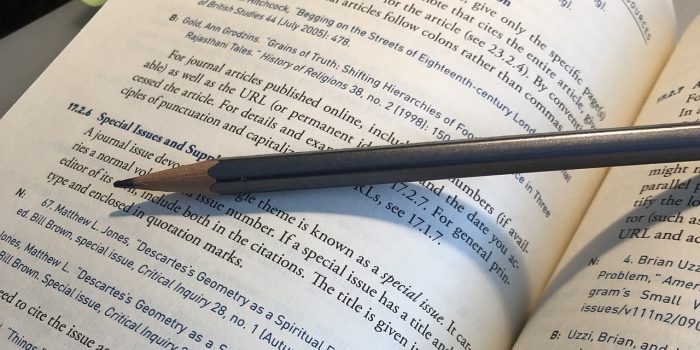Introduction
MLA format citation is a referencing style used in academic writing, primarily in the humanities and liberal arts. MLA stands for Modern Language Association, which is the organization that developed and maintains the MLA citation format. This guide will provide a detailed overview of MLA format citation, including how to cite various types of sources and examples of MLA citations.
One of the most important aspects of academic writing is proper citation. Proper citation not only helps to avoid plagiarism, but it also helps to give credit to the authors whose work you are using in your own research. MLA format citation is a widely-used referencing style that is particularly common in the humanities and liberal arts.
The MLA citation format is relatively simple and straightforward. It consists of two main elements: in-text citations and a works cited page. In-text citations are short citations that are included within the text of your paper. They typically consist of the author’s last name and the page number of the source. The works cited page is a list of all of the sources that you have used in your paper. It should be the last page of your document.
How to Cite in MLA Format
There are several key elements that must be included in MLA format citations. These include the author’s name, the title of the source, the publication information, and the medium of publication.
In-text citations:
In-text citations are a crucial component of MLA format citation. They allow you to indicate the source of the information or quote that you are using in your paper, and they typically consist of the author’s last name and the page number of the source.
- For in-text citations, the author’s last name and page number should be included in parentheses at the end of the quotation or paraphrase. For example: (Smith 23).
- If the author’s name is already mentioned in the sentence, only the page number should be included in parentheses. For example: According to Smith, “quote” (23).
Work Cited Page
The “Works Cited” page is an essential part of MLA style citation. It is a separate section that appears at the end of your essay or research project and lists all the sources that you have cited in the text.
- The title of the page is “Work Cited” if you have only one citation and “Works Cited” if you have multiple references.
- It is important to note that the entire section should be double-spaced. Using the same font and point size as the rest of the paper (usually Times New Roman or Arial, point 12).
- The sources must be listed in alphabetical order by the author’s last name and should have a hanging indent for every second line (a half-inch indent). Each line should be flushed to the left of the page. Additionally, the writer’s last name must be included with the page number at the top right corner as a header.
- It is important to remember that every in-text citation should have a corresponding reference in the final section. And each source should have a separate entry in the “Works Cited” page. If you have multiple sources by the same author, you should include the author’s name in the first citation. Use three dashes and a period for subsequent citations, organizing them by title.
Overall, the “Works Cited” page is a crucial aspect of MLA style citation. It is essential to understand and follow the proper format to ensure the credibility and validity of your research.
The Differences Between Bibliography and Works Cited
In MLA format, a “Works Cited” page is a list of all the sources cited in a paper. While a “Bibliography” is a list of all sources consulted in the research and preparation of a paper, whether or not they were specifically cited in the text. It is important to note that some teachers or professors may use the terms “Works Cited” and “Bibliography” interchangeably. But in MLA the primary difference is that a Works Cited page only includes sources that have been directly cited in the text. While a Bibliography includes all sources used in the research process, whether they were cited or not. It is a good practice to include a Bibliography, as it demonstrates the thoroughness of your research and shows that you have read and considered a wide range of sources.
Examples of MLA Citations
Book:
- Author’s Last Name, First Name. Title of Book. Place of Publication: Publisher, Year of Publication. Medium of Publication.
- Example: Smith, John. The History of the World. New York: Random House, 1990. Print.
Article in a Periodical:
- Author’s Last Name, First Name. “Title of Article.” Title of Periodical, vol. number, issue number, date, pages. Medium of Publication.
- Example: Jones, Mary. “The Role of Women in Society.” Journal of Gender Studies, vol. 6, no. 2, Spring 2001, pp. 45-56. Print.
Website:
- Author’s Last Name, First Name. “Title of Article.” Name of Website, URL, date of access.
- Example: Wilson, Susan. “The Importance of Diversity in the Workplace.” Diversity Inc., https://www.diversityinc.com/importance-diversity-workplace/, accessed October 15, 2020.
Conclusion
It is important to note that MLA format citation has specific guidelines for different types of sources, including books, articles, websites, and more.It is essential to familiarize yourself with these guidelines and to follow them closely in order to ensure that your citations are accurate and complete. Additionally, it is important to note that MLA format citation is not the only citation style that is used in academic writing. Other common citation styles include APA, Chicago, and Harvard.
MLA format citation is an important aspect of academic writing. By understanding the key elements of MLA citations and following the proper formatting guidelines, you can ensure that your work is properly cited and avoid plagiarism. This guide has provided a comprehensive overview of MLA format citation and examples of how to cite various types of sources. Remember that MLA referencing is a tool that helps you credit other authors’ work in your writing. It is important to follow the guidelines correctly.
Looking to write your paper in MLA format? Place an order and let our experts to write paper for you.





One thought on “How to to cite in MLA Format: A Comprehensive Guide with Examples”
Hello my friend! I wish to say that this article is amazing, nice written and include approximately all significant infos. I would like to see extra posts like this .